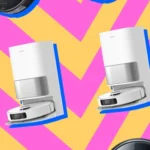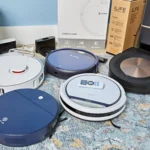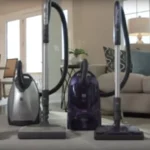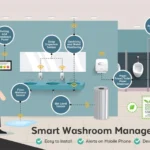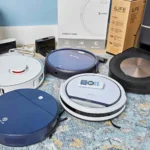Have you ever wondered why canister vacuum cleaners come with so many attachments? Or perhaps you’re not sure how to use them all? Don’t worry, you’re not alone. Many people are perplexed by the number of attachments that come with their canister vacuum cleaner. But fear not, in this article we will explore the world of canister vacuum cleaner attachments. We will examine the benefits of using attachments and the different types available. Additionally, we’ll elucidate how to use attachments properly and even give you tips on how to use them more efficiently. By the end of this article, you’ll be a pro at using canister vacuum cleaner attachments and wonder how you ever managed without them.
Benefits of Using Canister Vacuum Cleaners with Attachments
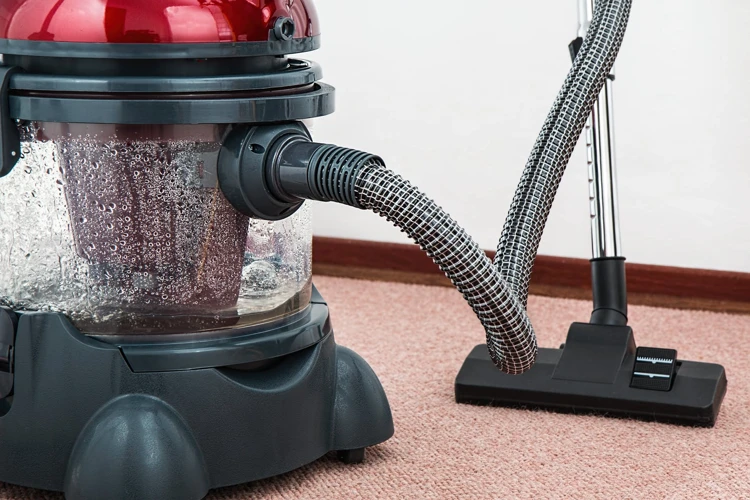
Are you tired of struggling to clean hard-to-reach areas with your regular vacuum cleaner? Do you want to enhance your cleaning experience with a versatile tool? Using a canister vacuum cleaner with attachments is the answer. Canister vacuum cleaners are known for their powerful suction and versatility, and attachments allow you to clean nooks and crannies that traditional vacuums can’t reach. In this article, we will explore the benefits of using canister vacuum cleaners with attachments, the types of attachments available, and how to use them effectively. Additionally, we will share some tips for using attachments more efficiently, and maintaining them for optimal performance. Check out our canister vacuum cleaners guide for more information.
Clean Hard-to-Reach Areas
When it comes to cleaning hard-to-reach areas in your home, using canister vacuum cleaners with attachments can make a world of difference. With the right tools, you can tackle areas that are impossible to clean with a standard vacuum. Here are some examples of these areas and the attachments that can help you clean them:
- Under furniture: Use an extension wand to reach underneath couches, beds, and other pieces of furniture. You can attach a crevice tool, dusting brush, or upholstery tool to the end of the wand to remove dust and debris from these often-neglected areas.
- In tight spaces: The crevice tool is also handy for cleaning narrow gaps between appliances, shelving units, and walls.
- On top of surfaces: Dusting brushes are ideal for cleaning hard-to-reach areas on top of shelves, cabinets, and other high surfaces that would otherwise require a ladder. Simply attach the brush to the end of an extension wand and use it to gently sweep away dust and cobwebs.
Using canister vacuum cleaners with attachments can help you maintain a cleaner home by tackling hard-to-reach areas that often go untouched. Additionally, it can help improve indoor air quality by capturing dirt and debris in HEPA filters. To learn more about the benefits of canister vacuum cleaners, check out our article on Top 5 Reasons to Choose a Canister Vacuum.
Enhance Your Cleaning Experience
Using canister vacuum cleaners with attachments can greatly enhance your cleaning experience. Not only can they make cleaning easier, but they can also help ensure that your home is cleaner than ever before. Here are some ways how canister vacuum cleaner attachments can enhance your cleaning experience:
1. Clean hard-to-reach areas: One of the biggest benefits of using attachments with a canister vacuum cleaner is that they can help you clean hard-to-reach areas. This includes behind and underneath furniture, between cushions and in tight crevices. With the help of attachments like the crevice tool and the extension wand, you can get into every nook and cranny to ensure your home is spotless.
2. Make cleaning more efficient: Canister vacuum cleaner attachments make cleaning more efficient by allowing you to clean multiple surfaces and materials without having to switch to a different vacuum or attachment. For example, the dusting brush can be used to clean upholstery, curtains, lampshades and even walls. Additionally, the hardwood floor brush can be used on hardwood floors, tiles and even carpets.
3. Provide deep cleaning: Attachments like the power nozzle and the pet hair tool provide deep cleaning on an entirely different level. They can easily pick up pet hair and dust that regular vacuum cleaners may miss. The power nozzle can agitate the carpet fibers to loosen dirt and debris, while the pet hair tool can pick up stubborn pet hair from upholstery and carpets.
4. Save time and energy: Canister vacuum cleaner attachments can help save you time and energy when cleaning your home. Rather than having to use different cleaning tools for each surface, you can simply attach the appropriate tool and get the job done quickly and efficiently.
In short, canister vacuum cleaner attachments provide a lot of benefits that can help make cleaning easier and more efficient. From cleaning hard-to-reach areas to providing deep cleaning, the attachments help you ensure that your home is spotless in no time.
If you want to learn more about maintaining your canister vacuum cleaner or deciding between a canister and an upright vacuum, check out these relevant articles: canister vacuum maintenance tips, canister vs. upright vacuum, and canister vacuum cleaners for hardwood floors. You might also be interested in learning about HEPA filters in canister vacuums, buying factors in choosing a canister vacuum, and choosing the best canister vacuum for you with our canister vacuum chooser. Finally, read this article on the advantages and disadvantages of bagged vs. bagless vacuum cleaners to help you determine which type is best for you.
Types of Canister Vacuum Cleaner Attachments
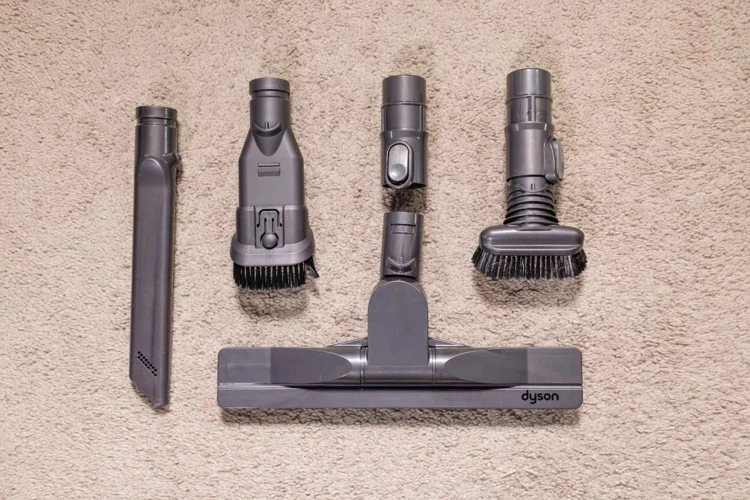
When it comes to cleaning your home, having the right tools can make all the difference. Canister vacuum cleaners are designed to be versatile with their various attachments for different cleaning needs. These tools can tackle hard-to-reach corners, delicate surfaces, and stubborn pet hair. In this section of the article, we’ll explore the different types of attachments available for canister vacuums and how to use them effectively. Whether you’re looking to clean hardwood floors, upholstery, or pet hair, with the proper attachment, you can get the job done quickly and thoroughly. Let’s dive into the world of canister vacuum attachments and discover what they have to offer.
Crevice Tool
The crevice tool is a long and narrow attachment that is perfect for cleaning tight spaces. It usually comes in a standard size, but some models may offer a variable width option. The design of this attachment allows it to reach deep into narrow gaps, such as between couch cushions or car seats, where other attachments cannot.
The crevice tool is typically made of plastic, but high-end models may incorporate metal for added durability. Some models also come with a flexible crevice tool that can bend and flex into hard-to-reach spots.
Here is a table that outlines the main features and benefits of the crevice tool:
| Features | Benefits |
|---|---|
| Narrow and long design | Reaches tight spaces with ease |
| Standard or variable width | Works well for various gap sizes |
| Plastic or metal construction | Durable and long-lasting |
| Flexible option available | Bends and reaches difficult areas |
To use the crevice tool, simply attach it to the hose of your canister vacuum cleaner. Position the tool at the beginning of the tight space you want to clean and slowly move it along the gap. Avoid applying too much pressure, as it may damage the tool or the surface you are cleaning.
It’s important to note that the crevice tool is not suitable for cleaning larger areas, as it has a small suction area. However, it is a handy tool to have in your cleaning arsenal for those hard-to-reach spots.
To learn more about other canister vacuum attachments and factors to consider when buying a canister vacuum cleaner, check out our articles on HEPA filters for canister vacuums and canister vacuum buying factors.
Dusting Brush
The dusting brush is a versatile attachment that can be used on a variety of surfaces, such as furniture, curtains, blinds, and lampshades. It is designed with soft bristles that help to gently remove dust and debris without scratching or damaging delicate surfaces. This attachment is particularly useful for cleaning hard-to-reach areas such as corners, crevices, and tight spaces.
| Attachment: | Dusting Brush |
|---|---|
| Function: | Gently remove dust and debris from delicate surfaces and hard-to-reach areas. |
| Usage: | Attach the dusting brush to the wand and adjust the suction to low. Use gentle strokes to dust surfaces, starting at the top and working downwards. For particularly dirty areas, additional pressure may be applied. |
| Benefits: | Prevents scratching and damage to delicate surfaces while effectively removing dust and debris. Ideal for hard-to-reach areas and tight spaces. |
Using the dusting brush can enhance your cleaning experience by providing a thorough and gentle clean. It is important to ensure that the brush is attached correctly to the wand, and that the suction is adjusted to a low setting to prevent damage to delicate surfaces. It is also beneficial to start dusting at the top of the surface and work downwards to prevent dust from falling onto previously cleaned areas. Regular use of the dusting brush can also help to extend the life of your furniture, curtains, and other delicate surfaces by preventing the buildup of dust and debris.
Upholstery Tool
The upholstery tool is a versatile attachment that can be used to clean furniture, curtains, and even car interiors. This attachment typically comes with a wide, flat head that uses suction to draw up dust, dirt, and debris from soft surfaces without damaging them.
Key Features of the Upholstery Tool
| Feature | Description |
| Wide, Flat Head | The wide head of the upholstery tool allows for efficient cleaning of large surfaces. |
| Soft Bristles | The soft bristles help to loosen and lift dirt and debris from upholstery without damaging the fabric or material. |
| Flexible Design | Often, the upholstery tool has a flexible design that allows you to reach difficult areas of your furniture easily. |
How to Use the Upholstery Tool
Using the upholstery tool is easy, and it is an effective way to remove dirt, dust, and pet hair from your furniture. To use the upholstery tool, simply attach it to the end of your vacuum wand or hose, and then adjust the suction as needed.
Next, use the wide, flat head to cover the surface of your furniture. Work in one direction to remove as much dirt and debris as possible. If you encounter any spots or stains that are difficult to remove, switch the attachment to the crevice tool to get into the tight areas.
Tips for Using the Upholstery Tool More Efficiently
Here are some tips to help you get the most out of your upholstery tool:
– For best results, vacuum your furniture regularly using the upholstery tool.
– When cleaning a large piece of furniture, work in sections to ensure you cover every area thoroughly.
– If you have pets, consider using the upholstery tool frequently to remove pet hair before it becomes embedded in your furniture.
– To avoid damaging delicate fabrics, start with the lowest suction setting and adjust as needed to achieve the desired cleaning result.
The upholstery tool is a must-have accessory for anyone with soft surfaces that need regular cleaning. By understanding how to use this attachment effectively, you can keep your furniture looking new and extend their lifespan.
Hardwood Floor Brush
The hardwood floor brush is a must-have attachment for any canister vacuum cleaner. It is specially designed to clean hardwood or any other type of hard flooring without scratching, scuffing or damaging the surface. Here are some of the features and benefits that make the hardwood floor brush an essential tool for keeping your floors looking their best:
- Gentle Bristles: The hardwood floor brush often has soft bristles made of natural materials like horsehair or nylon. These bristles are gentle on your floors, yet effective enough to pick up dust, dirt, and debris.
- Large Surface: The brush is typically wider and bigger than other brush attachments, which means it can cover a larger surface area in a shorter time. This is particularly beneficial if you have a large open-concept space or if you’re cleaning multiple rooms.
- Prevents Scratches: The hardwood floor brush often comes with wheels that allow it to glide smoothly across the floor without scratching or damaging it. It’s a great alternative to using a traditional vacuum head, which can often scratch or leave marks on your hardwood floor.
- Ergonomic Design: Many hardwood floor brushes have an ergonomic design that makes it comfortable to use, even for extended periods. It typically has a swivel head that allows you to maneuver the brush around obstacles or furniture with ease.
To use the hardwood floor brush effectively, you should first ensure that the brush is clean and free from debris that could scratch your floors. Once you’ve attached the brush to your canister vacuum cleaner, adjust the suction and brush roll settings to the appropriate levels for your hardwood flooring. Then, turn on your vacuum and start cleaning your floors, starting from one corner and working your way across. Remember to keep the brush parallel to the floor for the best results.
The hardwood floor brush is an essential attachment for any canister vacuum cleaner. With its gentle bristles, large surface area, scratch-prevention features, and ergonomic design, it’s the perfect tool for keeping your hardwood floors clean and polished.
Turbo Brush
One of the handiest attachments that come with most canister vacuum cleaners is the turbo brush. This tool is perfect for cleaning up pet hair, dust, and dirt from carpets, rugs, and upholstery. Unlike other brushes, the turbo brush comes with a unique feature that allows it to pick up dirt and debris from the fibers of your carpets and furniture easily.
The table below shows the specifications of a typical turbo brush attachment:
| Specification | Description |
|---|---|
| Size | Varies by model, typically 10 to 12 inches wide. |
| Bristle Type | Easily remove dirt, hair and debris from carpets and upholstery. |
| Compatibility | Fits most canister vacuums with 1.25 inches diameter wands and hoses. |
| Use | Designed specifically for carpets, area rugs, upholstery, and staircases. |
| Advantages | Helps remove pet hair and can clean small, tight areas. |
The bristles on the brush agitate the surface of carpets, bringing up embedded dirt and debris, which the suction power of the vacuum then removes. Using a turbo brush will leave your carpets looking and feeling cleaner, and you’ll be amazed at how much pet hair and dust it can pick up.
The size of a turbo brush typically ranges from 10 to 12 inches wide, which makes it perfect for cleaning carpets, area rugs, upholstery, and even stairs. This powerful attachment is perfect for cleaning small, tight areas that larger vacuum tools cannot reach.
The compatibility of the turbo brush is advantageous as it fits most canister vacuums with a 1.25-inch diameter wand or hose, so you don’t have to worry about buying a new vacuum cleaner if you already have a canister vacuum.
If you have pets, carpets, or area rugs, investing in a canister vacuum with a turbo brush attachment is an excellent choice. It will make the cleaning process a lot easier, and you’ll be able to say goodbye to stubborn pet hair and dust that often proves difficult to clean.
Extension Wand
One of the most useful attachments that come with canister vacuum cleaners is the extension wand. This attachment helps to extend the reach of the vacuum cleaner, making it possible to clean high or hard-to-reach surfaces. It’s especially helpful for cleaning ceilings, walls, and even the tops of furniture.
The extension wand typically comes in two or more pieces, allowing you to adjust the length of the wand as needed. It is designed to attach to the hose of the vacuum cleaner, and other attachments can be added onto the end of the wand to provide even more reach.
| Pros | Cons |
|---|---|
|
|
To use the extension wand, simply attach it to the hose of the vacuum cleaner and adjust the length as needed. You can then attach other tools or brushes onto the end of the wand to clean specific surfaces or areas.
Keep in mind that using the extension wand may require some practice, as it can be difficult to maintain the proper balance and control when cleaning high surfaces. It’s important to take precautions and use a stable ladder or step stool when cleaning higher areas.
The extension wand is a versatile and useful attachment for canister vacuum cleaners. Whether you need to clean high ceilings or walls, or just want to extend the reach of your vacuum cleaner for added convenience, this attachment is a must-have for any cleaning enthusiast.
Power Nozzle
One of the most powerful and versatile attachments that comes with canister vacuum cleaners is the power nozzle. This attachment is commonly used for deep cleaning carpets and removing embedded dirt and debris.
The power nozzle usually has a motorized brush roll that spins rapidly, agitating the carpet fibers and dislodging dirt and dust. It also has adjustable height settings to accommodate different carpet lengths.
To use the power nozzle, attach it securely to the end of the wand or hose of your canister vacuum cleaner. Then, adjust the brush roll and suction settings according to the type of carpet you are cleaning.
Here is a table summarizing the features of a typical power nozzle attachment:
| Feature | Description |
|---|---|
| Motorized brush roll | A powered rotating brush that agitates carpet fibers and loosens dirt and debris. |
| Adjustable height settings | Settings that can be changed to accommodate different lengths of carpet pile. |
| Suction control | A feature that allows you to adjust the suction power of the vacuum. |
| Easy-glide wheels | Wheels that make it easy to move the vacuum cleaner over carpet. |
| Lightweight design | A design that makes it easy to maneuver the power nozzle for extended periods. |
The power nozzle attachment is an essential tool for anyone looking to deep clean carpets with a canister vacuum cleaner. With its motorized brush roll and adjustable settings, it can easily remove embedded dirt and debris from your carpets and restore their appearance.
Pet Hair Tool
As a pet owner, you know how challenging it can be to clean up your furry friend’s hair from your furniture and carpets. A pet hair tool is a specialized attachment that comes with canister vacuum cleaners to make this task easier. This tool is designed to suck up pet hair and dander from furniture, carpets, and other surfaces.
The pet hair tool typically has stiff bristles that agitate pet hair and dander, making it easier for the vacuum to suction up. It is also designed to be gentle on upholstery and can help remove pet hair without damaging the fabric. This attachment is a must-have for pet owners who want to keep their homes looking and smelling fresh.
Here are some key details about the pet hair tool:
| Feature | Description |
| Bristles | The pet hair tool has stiff bristles that help loosen pet hair and dander from surfaces. |
| Shape | The attachment is typically a small brush that can attach to the hose or wand of the canister vacuum cleaner. Some pet hair tools may have a wider head to cover more surface area. |
| Compatibility | Not all canister vacuum cleaners come with a pet hair tool, so it’s important to check that your specific model is compatible. Some models may have a specialized pet hair nozzle instead of a traditional attachment. |
To use the pet hair tool, you simply attach it to the end of the vacuum cleaner’s hose or wand. Begin by dusting the surface you want to clean with a dusting brush to remove any loose debris. Then, use the pet hair tool to agitate the pet hair and dander on the surface, using a back-and-forth motion. Make sure to apply light pressure to avoid damaging the fabric.
It’s important to note that most pet hair tools are not designed for use on hardwood floors, so be sure to check the manufacturer’s recommendations before using the attachment on any surface. Additionally, you may need to clean the pet hair tool periodically to maintain its suction power and avoid clogs.
A pet hair tool is a specialized attachment that helps pet owners keep their homes clean and free of pet hair and dander. With its stiff bristles and gentle design, this attachment makes it easy to clean furniture and upholstery without damaging the fabric. Just make sure to use it properly and maintain it regularly for optimal performance.
How to Use Canister Vacuum Cleaner Attachments
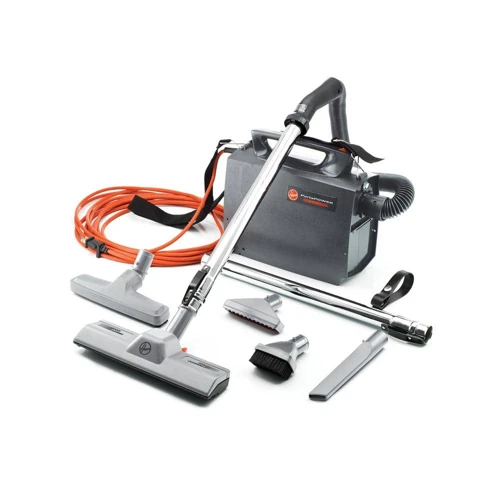
With a variety of attachments available for canister vacuum cleaners, it can be overwhelming to choose the right one for each surface. Fortunately, using canister vacuum cleaner attachments is not rocket science. With a little bit of guidance, you can learn how to use these attachments correctly and clean your home efficiently. In the following section, we will provide step-by-step instructions on how to use canister vacuum cleaner attachments properly. So, put on your cleaning gloves, grab your vacuum cleaner, and let’s get started!
Attach and Detach the Attachments Properly
Properly attaching and detaching the canister vacuum cleaner attachments is crucial to ensuring a seamless cleaning experience. Here are some steps to follow:
- Read the manual: Before attaching or detaching any attachments, make sure to read the manual provided with your canister vacuum cleaner. This will give you a clear idea of how to attach and detach each of the attachments to your vacuum cleaner.
- Align and insert: Align the attachment you wish to use with the port located on the hose or wand of your canister vacuum cleaner. Once aligned, insert the attachment into the port until it clicks into place. A click sound indicates that the attachment is properly attached to your canister vacuum cleaner.
- Detach: To detach the attachment, locate the release button or lever present on the attachment or the hose/wand. Press it and gently pull the attachment away from the port. Make sure to detach the attachment gently to avoid any damage to the vacuum cleaner or attachment.
- Store the attachments safely: After detaching the attachments, store them safely in a clean, dry place where they won’t get lost or damaged. Hanging the attachments on a holder or storing them in a designated place in your cleaning closet can be a good option.
Properly attaching and detaching your canister vacuum cleaner attachments not only enhances your cleaning experience but also increases the longevity of your attachments and vacuum cleaner. So, follow these simple steps and ensure a hassle-free cleaning experience.
Choose the Right Attachment for Each Surface
When using a canister vacuum cleaner with attachments, it’s important to choose the right attachment for each surface you’re cleaning. This will ensure that you get the best possible results and won’t damage the surfaces you’re cleaning.
Here are some tips for choosing the right attachment for each surface:
- Crevice tool: The crevice tool is great for cleaning tight spaces such as between couch cushions or in the corners of a room. It’s also perfect for getting into the crevices of your car seats or cleaning the lint trap on your dryer.
- Dusting brush: The dusting brush is ideal for cleaning delicate surfaces such as lampshades, curtains, and blinds. It’s also great for dusting bookshelves and other surfaces that can scratch easily.
- Upholstery tool: The upholstery tool is designed to be gentle on fabrics, making it the perfect choice for cleaning sofas, chairs, and mattresses. It’s also great for removing pet hair from upholstery.
- Hardwood floor brush: If you have hardwood floors, you’ll want to use the hardwood floor brush attachment. This attachment is designed to be gentle on hardwood floors while still providing excellent suction power.
- Turbo brush: The turbo brush is great for cleaning carpets and rugs. It’s designed to agitate the fibers of the carpet, helping to remove dirt and debris that other attachments might miss.
- Extension wand: The extension wand is perfect for reaching high spaces such as ceilings or the tops of bookshelves. It can also be used to clean under furniture without having to move it.
- Power nozzle: The power nozzle is ideal for cleaning high-traffic areas such as stairs and hallways. It’s designed to provide powerful suction and agitation, making it easier to remove stubborn dirt and debris.
- Pet hair tool: If you have pets, you’ll definitely want to invest in a pet hair tool. This attachment is designed to remove pet hair from carpets, upholstery, and other surfaces more effectively than other attachments.
By choosing the right attachment for each surface, you’ll be able to clean more effectively and thoroughly, and avoid damaging delicate surfaces.
Adjust the Suction and Brush Roll Settings
Once you have chosen the right attachment for the surface you want to clean, it’s important to adjust the suction and brush roll settings. This will ensure that you are using the canister vacuum cleaner as efficiently and effectively as possible.
Adjusting the Suction:
The suction power of canister vacuum cleaners can be adjusted depending on the surface being cleaned. For example, low suction power is suitable for delicate surfaces such as curtains or blinds, while high suction power is suitable for thick carpets. It’s important to adjust the suction according to the surface you are cleaning to ensure that you clean the area effectively without damaging it. Most canister vacuum cleaners will have the option to adjust suction on the machine’s main body or hose handle.
Adjusting the Brush Roll:
The brush roll is the part of the canister vacuum cleaner that helps to loosen and remove dirt and debris from carpets, rugs, and upholstery. Some attachments come with their own brush roll, while others use the machine’s main brush roll. It’s important to adjust the brush roll setting according to the surface you are cleaning. For example, turn off the brush roll when cleaning hard floors or delicate surfaces such as curtains or blinds, and turn it on for carpets and rugs.
Here is a table summarizing the adjustments that should be made depending on the surface being cleaned:
| Surface Being Cleaned | Suction Power | Brush Roll Setting |
|---|---|---|
| Hard Floors | Low | Off |
| Carpets/Rugs | High | On |
| Upholstery | Low/Medium | On (use upholstery tool) |
| Curtains/Blinds | Low | Off (use dusting brush or crevice tool) |
Adjusting the suction and brush roll settings will ensure that you achieve the best cleaning results and protect delicate surfaces from damage. Make sure to check your machine’s manual for specific instructions on how to adjust these settings.
Tips for Using Canister Vacuum Cleaner Attachments More Efficiently
Now that you know the benefits of using canister vacuum cleaners with attachments and types of attachments available, it’s time to learn some essential tips for using them more efficiently. These tips will not only help you clean better but also extend the life of your vacuum attachments. So, let’s dive in and discover how to make the most out of your canister vacuum cleaner attachments.
Clean and Maintain Your Attachments
Your canister vacuum cleaner attachments work hard to keep your home clean, so it’s important to take care of them in order to maintain their effectiveness. Here are some tips for cleaning and maintaining your attachments:
- Regularly Clean Your Attachments: Cleaning your attachments regularly is key to keeping them performing at their best. Use a soft brush or cloth to remove any dust or debris that may have accumulated on the attachments. For tougher stains or buildups, you may need to use a mild soap and water solution.
- Disinfect Your Attachments: Your attachments may come into contact with bacteria or other harmful substances while cleaning, so it’s important to regularly disinfect them. Use a disinfecting wipe or spray on the attachments, being sure to follow the manufacturer’s instructions.
- Replace or Repair Damaged Attachments: Over time, your attachments may become worn, damaged or broken. Broken attachments can harm your vacuum cleaner’s performance, and can potentially scratch your floors or upholstery. If you notice any damage, replace or repair the attachment as soon as possible.
- Avoid Moisture: It’s important to avoid getting your attachments wet, as moisture can damage the attachments and cause them to deteriorate over time. If you accidentally get an attachment wet, dry it completely before using it again.
- Store Your Attachments Properly: Proper storage is key to keeping your attachments in good condition. Store your attachments in a dry, cool place, away from direct sunlight or heat. Hanging them up or placing them in a storage container can help keep them in good condition until you need to use them again.
By following these simple tips, you can keep your canister vacuum cleaner attachments in top condition and prolong their lifespan, ensuring that they continue to help you keep your home clean and fresh.
Vacuum in the Right Order
When it comes to using canister vacuum cleaner attachments, vacuuming in the right order can make a big difference in the effectiveness of your cleaning. Start by using the crevice tool and dusting brush attachments to clean tight spaces and remove surface dust and debris from furniture, curtains, and blinds. These attachments are especially useful for reaching corners and edges that are difficult to clean with a regular vacuum cleaning head.
Next, move on to the upholstery tool and pet hair tool attachments to clean furniture, upholstery, and carpets. These attachments can be used to remove pet hair, dust, and debris from furniture and car interiors. Use them to thoroughly clean sofas, chairs, and cushions, and remove stubborn pet hair from carpets and rugs.
Once you’ve cleaned the furniture and upholstery, it’s time to move on to the hard floor surfaces. Begin by using the hardwood floor brush attachment to clean hard floors such as wood or tile. Use the extension wand to reach tight spaces beneath furniture and into corners.
If you have carpets in your home, use the power nozzle or turbo brush attachment to clean them thoroughly. These attachments are specially designed for deep cleaning carpets and can remove dust, dirt, and debris from the fibers of your carpets.
Finally, use the crevice tool attachment once again to clean any remaining tight spaces and corners in your home. By vacuuming in the right order, you will be able to get the most out of your canister vacuum cleaner attachments and achieve a deeper, more thorough clean.
Use the Attachments Regularly
Regular usage of canister vacuum cleaner attachments is crucial for maintaining the cleanliness and hygiene of your living space. It is important to not only make use of the attachments that come with your vacuum cleaner but also to use them frequently.
Why should you use the attachments regularly?
Using the attachments regularly can help you achieve a deeper clean in your home. The standard vacuum cleaner floorhead is great for cleaning floors, but there are areas that require more concentrated cleaning. Using attachments can help you reach into corners, clean upholstery, stairs, and other hard-to-reach places where dust and debris can accumulate.
Regular use of attachments can help prevent dirt and dust from accumulating in areas that are harder to clean with just a regular floorhead. It can also help reduce the workload the next time you have to clean your home.
How often should you use the attachments?
It is advisable to use the attachments at least once a week to ensure that your home remains clean and healthy. However, the frequency of use can vary based on your lifestyle and living conditions. For example, if you have pets at home, you may need to use the pet hair tool more frequently.
Which attachments should you use regularly?
To ensure an all-round deep clean, it is essential to use all the attachments that come with your canister vacuum cleaner. However, attachments like the crevice tool, dusting brush, and upholstery tool are the most commonly used ones.
The crevice tool can help you clean narrow gaps and corners, while the dusting brush can help you clean surfaces such as shelves, lampshades, and curtains. The upholstery tool is perfect for cleaning furniture, car seats, and other upholstery.
Final thoughts
Using canister vacuum cleaner attachments regularly can help improve the hygiene and overall cleanliness of your home. Make sure to use all the attachments that come with your vacuum cleaner to achieve an all-round deep clean. A weekly use of attachments can make your cleaning routine more efficient and help reduce the workload the next time you have to clean your home.
Store the Attachments Properly
After using your canister vacuum cleaner and its attachments to keep your home sparkling clean, it is important to store the attachments properly to ensure their longevity and prevent any damage.
Here are some tips on how to store your canister vacuum cleaner attachments:
- Clean Attachments before Storing: Make sure the attachments are clean and free of any debris before storing them. You can use a dry cloth or brush to clean them.
- Group Similar Attachments Together: Group the attachments according to their functions, such as all the brushes in one container and all the crevice tools in another. This will make it easier to find the attachment you need when you’re cleaning.
- Keep the Attachments in a Safe Place: Store the attachments in a place where they won’t get damaged or lost. A dedicated cabinet or storage container is a good option.
- Protect Sensitive Attachments: If you have any attachments that are made of delicate materials or have fragile parts, make sure to protect them by wrapping them up in a soft fabric or storing them in a separate container.
- Avoid Storing Attachments on the Floor: Don’t store your canister vacuum cleaner attachments on the floor as they may get damaged or kicked around accidentally. Instead, find a safe place where they can be elevated and away from foot traffic.
- Label the Containers: Label the storage containers or bags that you use to store your attachments so that you can easily identify them later on.
- Consider a Wall-Mounted System: Investing in a wall-mounted storage system for your canister vacuum cleaner attachments can save you time and space. It also keeps the attachments within reach and easy to locate.
By following these simple tips on storing your canister vacuum cleaner attachments, you can extend the life of your equipment and enjoy a clean, efficient home for years to come.
Conclusion
In conclusion, canister vacuum cleaners with attachments are a game-changer when it comes to cleaning. Not only do they make it possible to clean hard-to-reach areas, but they also enhance your cleaning experience, making it more efficient and effective.
By using the different types of attachments that come with your canister vacuum cleaner, you can clean every surface and material with ease. From crevices to upholstery, hardwood floors to pet hair, there’s an attachment for every cleaning job.
However, to make the most out of your canister vacuum cleaner attachments, it’s important to know how to use them properly. This involves attaching and detaching the attachments properly, choosing the right attachment for each surface, and adjusting the suction and brush roll settings as needed.
To get the most efficient and effective cleaning experience, it’s also important to keep your attachments clean and well-maintained, vacuum in the right order, use the attachments regularly, and store them properly.
Overall, a canister vacuum cleaner with attachments is an essential cleaning tool for any household. It’s versatile, convenient, and easy to use, making it the perfect cleaning companion for tackling any mess. So, if you haven’t already, consider investing in a canister vacuum cleaner with attachments – you won’t regret it.
Frequently Asked Questions
1. Why do canister vacuum cleaners come with attachments?
Canister vacuum cleaner attachments are designed to enhance your cleaning experience by allowing you to clean hard-to-reach areas and surfaces with different textures and materials more effectively.
2. How many types of canister vacuum cleaner attachments are there?
There are several types of canister vacuum cleaner attachments available in the market, including crevice tool, dusting brush, upholstery tool, hardwood floor brush, turbo brush, extension wand, power nozzle, and pet hair tool.
3. What is a crevice tool attachment used for?
A crevice tool attachment is designed to clean narrow and tight spaces, such as between sofa cushions, inside car seats, and along baseboards.
4. What is a dusting brush attachment used for?
A dusting brush attachment has soft bristles that are ideal for cleaning delicate surfaces, such as blinds, lampshades, and furniture upholstery.
5. What is an upholstery tool attachment used for?
An upholstery tool attachment can effectively clean all types of furniture upholstery, including sofas, chairs, and mattresses.
6. What is a hardwood floor brush attachment used for?
A hardwood floor brush attachment is ideal for cleaning hardwood floors without scratching or damaging them.
7. What is a turbo brush attachment used for?
A turbo brush attachment is designed to clean carpeted surfaces effectively by using a rotating brush to loosen embedded dirt and debris.
8. What is an extension wand attachment used for?
An extension wand attachment can help you reach higher or deeper spaces, such as ceilings, shelves, and corners.
9. What is a power nozzle attachment used for?
A power nozzle attachment is ideal for cleaning heavily soiled carpets or removing pet hair from carpets and upholstery.
10. How can I clean and maintain my canister vacuum cleaner attachments?
You can clean your canister vacuum cleaner attachments by wiping them with a damp cloth or rinsing them under running water. However, make sure to dry them thoroughly before using or storing them. To maintain their performance, replace damaged or worn-out attachments as needed.

